Day 1 of the 8th edition of The Climate Control Conference saw government representatives as well as stakeholders from the construction and HVAC industries participate in the first seven of the 14 sessions – further broken down into a record 82 topics – that made up the agenda of the two-day event. The following are excerpts […]
Day 1 of the 8th edition of The Climate Control Conference saw government representatives as well as stakeholders from the construction and HVAC industries participate in the first seven of the 14 sessions – further broken down into a record 82 topics – that made up the agenda of the two-day event. The following are excerpts of the discussions that took place on June 15…
Report by Fatima de la Cerna | Assistant Editor
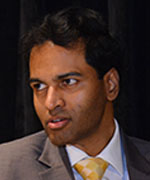
B Surendar, Editorial Director and Associate Publisher of CPI Industry
B Surendar, Editorial Director and Associate Publisher of CPI Industry, spelt out the end-goal of the conference: “We are gathered here for a unique experience aimed at bringing about market transformation. We are at the mid-point of the second decade of the 21st century, and the threat from climate change is a real one.
“This conference is about soul-searching, about embracing a collective, collaborative, inter-connected approach to keeping sea levels from rising and to protecting entire coastal communities from massive displacement and, broadly, the entire humanity from destruction. It is also about creating a comfortable experience in the built-environment. As representatives of government, and of consulting firms, contracting firms, master developers, end-users, manufacturers and service-providers, you are probably already aligned to individual company mission statements that spell out environmental goals, but what is often lacking is collective thinking and collective effort by the entire stakeholder community. And that’s why we have gathered here to find areas of commonality and to better understand each other’s expectations and objectives.”
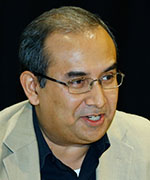
Sougata Nandi, Technical Advisor for Sustainable Development at CPI Industry
Sougata Nandi, the event’s co-moderator and Technical Advisor for Sustainable Development at CPI Industry, gave a brief background on the event’s unique format as well as the topics on the agenda: “This is not a regular conference,” he began. “We will not be requesting you to come and make presentations on PowerPoint, which is the typical scenario. The idea behind this conference is to have a conversation involving all of us. It’s a conference-cum-conversation; hence, we’ve started calling it a ‘confersation’. As for the topics that we have chosen, I know that 82 topics covering 14 sessions, across two days, seem a lot. The motivation behind choosing the topics is to make sure that we do not miss anything. We will not necessarily go into in-depth analysis of each topic, but we’d really like to focus on key points from the experts who have gathered here.”
Surendar: “We wish to start from where we feel is a logical point and that is to understand the stimulatory stance taken by the regional governments. They have been very proactive in taking certain measures to stimulate the economy. Dubai Expo 2020 is a wonderful example of a very robust effort at stimulating the economy, and all of us have been privy to vision statements coming from the region, such as the Dubai Integrated Energy Strategy, the Abu Dhabi Sustainability 2030 and the Qatar National Vision 2030. Also, in 2010, the UAE released a very interesting document that focused on environment health: the UAE National Strategy and Action Plan for Environmental Health. For us, it is
about collecting all these vision statements, all these stimulatory measures and throwing open the discussions.”
Nandi: “What progress has the Dubai Supreme Council of Energy made, in terms of its overall targets?”

Faisal Ali Rashid, Director for Demand Side Management, Dubai Supreme Council of Energy
Faisal Ali Rashid, Director for Demand Side Management, Dubai Supreme Council of Energy: “We have programmes on street lighting, treated water and District Cooling, and they have been or are being activated. In terms of energy savings, we’re trying to achieve around 19 kWh by 2030 – which is not an aggregate – and 47 billion imperial gallon of water. For many regulations, like the building codes, we started with public buildings in 2010, and when buildings are commissioned, we compare them to a building with a similar footprint before the building codes, so we can assess and push for the target of 30% reduction of power consumption. Since 2013, we have applied the building codes to all the communities in Dubai. In terms of permit, more than 30 million square feet are in compliance with the building codes.
“We also have a retrofitting programme, with a target of 30,000 buildings by 2030, and a demand-response plan, which requires metering and smart grid. In terms of numbers and KPIs, out of the identified goal of 30% consumption reduction, the target for the 2010-2015 period was four per cent, but we are ahead of schedule because we have achieved five per cent savings.”
Nandi: “What has ESMA achieved when it comes to the implementation of guidelines or equipment standards? Also, when identifying specifications for equipment, what process does ESMA go through?”
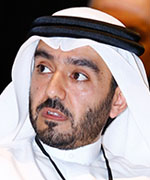
Jasim Mohammad Sulaiman Al Ali, Head of Section for the Electrical and Mechanical team in the Conformity Affairs Department, Emirates Authority for Standardization and Metrology
Jasim Mohammad Sulaiman Al Ali, Head of Section for the Electrical and Mechanical team in the Conformity Affairs Department, Emirates Authority for Standardization and Metrology: “In 2012, we implemented the first stage of the HVAC [efficiency-rating scheme], for window and split-unit air conditioners, and we’re now working on the second stage, which expands the scope to cover non-ducted and package ACs, including chillers, heat exchangers and air circulators. Our targets, as a government body, are to achieve a spinning reserve in energy, reduce carbon dioxide and reduce the load on the network.
“About the process, first of all, we create a draft and then circulate it to the government and the private sector, so everyone has a contribution in the regulation. Everyone in the government and in the industry is aware of the direction ESMA is heading for and what new regulations are coming into the market. This awareness will help smoothen the implementation of the regulation and level the playing field, in terms of entering the UAE market.”
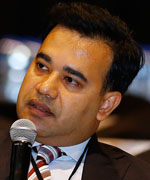
Nesar Reza Khan, Head, Investment Agency, GGICO Properties
Nandi: “What is the definition of affordable housing, and how does one deliver affordable housing?”
Nesar Reza Khan, Head, Investment Agency, GGICO Properties: “These master-plan developments are not necessarily skyscrapers; they’re G+4, G+6 or G+8. Typically, we concentrate on studios and one-beds, going up to 2-beds, maximum. These projects are for the mid-segment, with a household disposable income of between AED 9,000 and 15,000, and if the developers could afford in-house financing, where 30% of the construction cost is allocated during the construction process and the balance of the 70%, if we could get that from the investors or the end-users post-completion, that would make it more affordable for the mid-segment to come in and own property in Dubai, instead of living in another emirate.”
Surendar: “The Government’s efforts at stimulating the economy have historically included mega projects and mega events. Projects, such as the Dubai Shopping Festival (DSF), starting in 1995, were part of the initial foray to carve out a tourism-based economy.”
Nandi: “No one was asking or forcing you to do a project like The Sustainable City, so why did you choose to develop it?”

Faris Saeed, CEO, Diamond Developers
Faris Saeed, CEO, Diamond Developers: “I would say it was a mix of guilt for past developments and increasing utility bills. We also saw that in Dubai, not many developers were paying attention to the environment and to power and water consumption. Feeling the need, we started to think seriously about developing a sustainable city. Can we build a project that addresses all sustainability aspects without extra costs? This was the main challenge for us. We started to do the studies. We ended up with the conclusion that you can cover all aspects of the environment without compromising on quality and without spending extra. As developers and contractors, we don’t see the costs of a project from just one angle. We see it in a holistic way, where all the savings that should be implemented are calculated for. So, that was the first question, and after it was answered, everything else was easy for us.”
Nandi: “Is there a way to reduce the construction costs of affordable housing?”
Khan: “In a typical project where the developer is also in charge of the infrastructure, it would come to at least AED 50 to 100 per square feet for infrastructure cost. On top of that, we’re looking at AED 100 per square feet for professional cost and project lifecycle management cost, and any kind of quality development will cost you AED 300 per square feet. That’s already AED 500 per square feet, and it’s still without the cost of land. For a private developer, it is very difficult to embark on a project, wherein you want to pass an end-product to an end-user at AED 500 to 600 per square feet. We almost have to reach a limit of AED 800 – minimum – so that we can ensure profit for private developers. My advice to parties who are involved here today, both from the government side and the private sectors, is to develop a public-private-partnership model that would make affordable housing economically sustainable.”
Surendar: “Perhaps one of the fundamental causes of energy inefficiency and poor Indoor Environmental Quality (IEQ) in many buildings in the region is an inability or unwillingness, or both, on the part of the construction and HVAC industries to translate the building owner’s intent into reality. This is, of course, assuming that the owner has the right ideals in mind.”
Nandi: “How did you convince management to take a sustainable approach? And do you believe that owners, in general, truly want to be sustainable?”
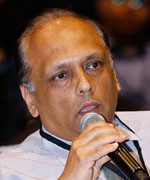
Bharat Asarpota, Maintenance Engineer, Emarat
Bharat Asarpota, Maintenance Engineer, Emarat: “Management was not, and are still not, convinced. The only thing that convinces them is when you actually bring the cost down; when you say, ‘Listen I’m going to do this project, and I will bring your energy bills [down] by 30 to 40%.’ That excites them. At the top level, I don’t think there was a commitment to look at the environment in a positive way, unless it was a side effect. If bringing down the energy bills helps the environment, then good. Environment CSR is a very fashionable statement, but management is only looking to bring the costs down.”

George Kenich, SEMCO, Guest Lecturer at Harvard University
George Kenich, SEMCO, Guest Lecturer at Harvard University: “The owner needs to understand the lifecycle of the project and the equipment he is planning to implement. Education for owners is minimal or non-existent. The owners don’t have any idea what they’re trying to build. Their only concern is getting back their money in six or eight or 10 years. It’s a disaster, because nobody knows what building lifecycle and main development lifecycle mean. Nobody is making an effort to resolve this by educating the owners and telling them how to get savings.”
Nandi: “A classic challenge in the construction industry is when an architect has designed a building, then MEP functions come in and they have a huge gap. This used to be the case many years back. Is the concept changing? Are MEP skills sets coming in or getting integrated at the architectural design phase?”

Nabil Shafa Amry, Manager, MEP, La Casa Architects and Engineering Consultants
Nabil Shafa Amry, Manager, MEP, La Casa Architects and Engineering Consultants: “In the last two or three years, when starting a project, we’ve been considering sustainability and green building requirements. We begin by building a strong team of people who have a common understanding of sustainability requirements. This team would have the architect, the structural engineer, the green consultant and the MEP engineer, for the role of each team member affects the MEP design and the MEP equipment selection.”
Jagath Gunawardena, Manager, Projects and Building Development, Dubai Chamber of Commerce and Industry: “In February 1995, we moved into the Dubai Chamber of Commerce building, which was actually built by a Japanese consultant. The facade and the roof were fantastic. The internal insulation was excellent, but MEP was 300 times oversized. It was a trend then, and the MEP side was not designed by the Japanese. It was given to a local MEP [company] to design, and, as expected, the result was unbelievably oversized. I had eight chillers, and we never had the occasion to run more than three until 2010, when we replaced those chillers.”
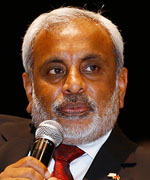
Jagath Gunawardena, Manager, Projects and Building Development, Dubai Chamber of Commerce and Industry
Surendar: “The construction frenzy of the mid-noughties engendered a culture of unreasonable project delivery deadlines. Faced with the situation, HVAC design best practices were compromised and corners cut. Buildings went up on a cookie-cutter template, unmindful of such issues as orientation, the result being widespread energy inefficiencies and IEQ nightmare scenarios.”
Nandi: “Is there a danger that we are going through the same thing again because of Expo 2020 and all the projects that have been announced?”
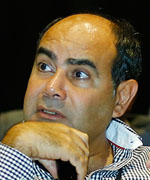
George Berbari, CEO, DC Pro Engineering
George Berbari, CEO, DC Pro Engineering: “The pace of real estate sales today is slower, thus allowing developers to spend a little bit more time on organisation… and they have time to do value engineering and optimisation, which were never there in 2007. Back then, people wanted to build and deliver as fast as they could.”

Charles Blaschke, General Manager, taka solutions
Charles Blaschke, General Manager, taka solutions: “As an ESCO, we come from a unique standpoint where we are the consultant and, because we are responsible for the performance of the project, the owner. Design is very important for us, for when we retrofit a building, it’s all performance-based. If we don’t operate from design, orientation and performance standpoints, there’s no way we can achieve energy savings. We like to use technology, and I feel that where we are today, this market is very different from 2007, 2008. There are a lot of tools available that can make designs better. You can show an owner, either through BIM or an energy model, the impact your design can have on energy efficiency.”
Hassan Younes, Technical Director, Griffin Consultants: “For now, most of the owners do not understand energy modelling and its benefits; and also, there are bad energy modellers out there…. At this point, we are using more energy modelling for existing buildings, especially for ESCOs, who want to guarantee their savings. It can become quite tricky. You have the bills, and you have to calibrate the model, and that’s where you need expertise in modelling a building as well as its controls and efficiencies.”

Hassan Younes, Technical Director, Griffin Consultants
Surendar: “The task of enhancing energy efficiency is an ongoing exercise. How many of the buildings that have earned the instantly recognisable LEED green plaque – be it platinum, gold or silver – continue to be so? Have complacent building owners slackened efforts, defeating the very purpose of the exercise?”
Nandi: “In the context of the UAE being the smartest country in the world, how is the government really defining a smart building?”

Salim Mohammad Zid, Senior Civil Engineer, Dubai Municipality
Salim Mohammad Zid, Senior Civil Engineer, Dubai Municipality: “It is the vision of the government for Dubai to be ranked among the smartest cities in the world by 2017, and to become a smart city, we must make smart buildings. To do that, we must not only check energy performance or water and electricity consumption, we must go deeper and check on the occupants themselves – check their performance and productivity, their safety and security. Our focus now is to start with the building and to integrate the city’s infrastructure with its buildings. Building management systems are available, and our infrastructure in Dubai is modern, so the transition to smart buildings should not be difficult.”
Nandi: “Has EGBC conducted any evaluation of how green LEED-certified buildings really are a few years down the line of operation? If no, do you have plans to do that?”
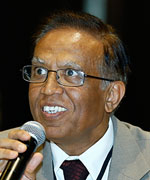
Sarfraz Dairkee, Secretary to the Board, Emirates Green Building Council
Sarfraz Dairkee, Secretary to the Board, Emirates Green Building Council: “We are trying to develop the mechanism to collect the data and disseminate that information. Our first target buildings are those in the hospitality industry. We will collect and collate data based on a scheme like Energy Star.”
Nandi: “So, we have a sustainably designed building, and the papers have been approved by authorities. Now comes on board the contractor, who has been selected not because he has sustainability credentials, but because the procurement process gives weight to different criteria and this particular contractor got the highest score for being the cheapest. Is this still happening? Are tenders, by and large, awarded to the cheapest contractor?”

Samir Thabet, Sustainability Coordination Manager, Consolidated Contractors Company
Samir Thabet, Sustainability Coordination Manager, Consolidated Contractors Company: “I can’t say that I agree with that, because we’ve been working on bigger scale projects recently. In fact, we just did one big project in Saudi Arabia, and the sustainability weight in the tender evaluation was five per cent – the same percentage given to quality and safety. That was important to us, because we are concerned about sustainability, and in cases where that’s used to evaluate us, sustainability is also what clients are paying for.”
Nandi: “Are contractors getting more support and better understanding from the developers?”
Kenich: “Not from all the developers, because the main driving force for most developments here is profit. Although, there are some who understand what lifecycle means and what it means to market a Green Building and what better returns they might have for the Green Building. The government now has initiative and that extends to government developers. They have systems developed just to be in line with Green requirements; but the reality is, more developers still believe that a Green Building is much, much more expensive. And this is true if you only look at the initial cost of the building, but not if you also consider the lifecycle cost.”
Nandi: “As someone who specialises in District Cooling systems, what challenges are you seeing today, and are those challenges shifting?”
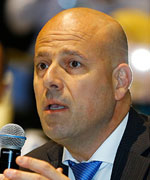
Khalil Issa, Managing Director, ADC Energy Systems
Khalil Issa, Managing Director, ADC Energy Systems: “Our clients include the likes of Tabreed, Emicool and Empower. But we also have master developers, who build and operate their own plants. The essential KPI for all of them is efficiency, meaning lifecycle analysis, and how much it’s going to cost them to cool and to provide that utility to their end-users. And of course, from that perspective, they have to bank on two things: capital cost/first cost and operating cost, and that’s where the kilowatt per tonne becomes so critical. Has this changed in the last 10 years? No, it’s still largely measured by what is the overall kilowatt per tonne, but what has changed is the actual value of what is a kilowatt per tonne today compared to 10 years ago.”
Surendar: “In nearly 10 years of editing Climate Control Middle East, I have had the privilege of interacting with a wide cross-section of manufacturers. They have individually presented their solutions for better energy efficiency, reliability and IEQ. At the same time, they have expressed their frustration over issues like counterfeiting, misrepresentation of certifications, monopolistic practices and under-invoicing. In short, the demand is for a level playing field.”
Nandi: “What mechanisms have been deployed or adopted to protect consumers from the ill effects of products currently available in the UAE market?”
Al Ali: “To bring the focus on HVAC – manufacturers need to prove that their products comply with UAE standards by submitting test results from an accredited laboratory. The test results, which should supply information on safety and performance, will be the basis for certification. At ESMA, we have two certification programmes: the ECAS (Emirates Conformity Assessment Scheme) and the EQM (Emirates Quality Mark). Only when a product has been certified under either programme will it be allowed to enter the market.”
Nandi: “With the transition towards greener and more sustainable projects, have you had to discontinue specific products because they are no longer relevant?”
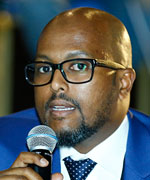
Saad Ali, General Manager, Ruskin Titus
Saad Ali, General Manager, Ruskin Titus: “We advise consultants and contractors on products that are no longer usable and energy efficient. Some of them insist on it, again because of the so-called ‘value engineering’. I don’t agree with it. There’s no value engineering in making a building cheaper and making a profit in the next two years rather than looking at the long term.”
Nandi: “Local manufacturers face huge competition from multinational companies, with their more established and better-recognised brand names.”
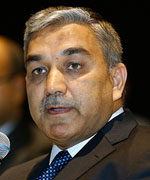
Asim Hashmi, Sales Director, Applied, SKM Air Conditioning
Asim Hashmi, Sales Director, Applied, SKM Air Conditioning: “Local manufacturers are a boon to the country, because they promote self-dependence. That is very important in case of an embargo on AC equipment. Can you imagine that happening and we were reliant on international manufacturers? We would not survive.
“Unfortunately, international players are given more preference than local manufactures, because somehow, there’s a perception that local manufacturers produce low quality – and that is despite us meeting quality standards, performing performance testing and receiving certification from organisations like Eurovent and AHRI. People should give local manufacturers encouragement and a fair chance to compete.”
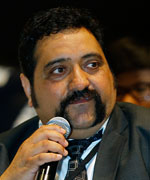
Sanjiv Sachdeva, Managing Director, GESS
Sanjiv Sachdeva, Managing Director, GESS: “Another perception that is in the market even today is that anything from the West is more technologically advanced and more expensive; anything coming from Far East or developing countries, including locally manufactured products, is obsolete and low cost. We market a lot of products from India, and they have patented equipment not manufactured anywhere else, including all developed countries. The point is this: the product has to be suitable and should be designed with our climate in mind, and some of the local products are far better in that respect.”
Nandi: “As a global player, you must be coming up against competition, not only from other multinational companies, but also local outfits who know the local market much better. When it comes to the GCC region, is there a specific major challenge that you are facing today?”
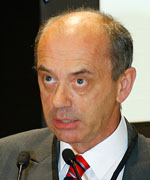
Dermott Crombie, Vice President for Strategic Initiatives, Ingersoll Rand
Dermott Crombie, Vice President for Strategic Initiatives, Ingersoll Rand: “We don’t see a problem in that respect. The playing field is as it is, and we provide products globally. The timing when a product might get rolled out will be different. We will probably have the advantage of greater R&D in various parts of the world. We have R&D in the US, in India and in China, and all play together to give us a product that we can then roll out to different parts of the world. So, there are pluses and minuses, but I think the playing field is fairly balanced.”

Hans Reinders, CEO, Oxycom
Hans Reinders, CEO, Oxycom: “We have been looking at the market here for the last two years. And in the past three or four months, we have basically decided which way we are going to go. There’s tremendous opportunity for us here. But to tap into that, we believe that you really have to dive into the pond and work with the people and learn together.”
Nandi: “Are you facing any operational challenges as a result of being here?”
Reinders: “We are. But when you’re in the pond, you’ve got to swim. There is a lot of knowledge here that can help us, and the people I’ve met are interesting and knowledgeable.”
Nandi: “When it comes to fire and safety products, quality standards as well as installation protocols are not as negotiable as with regular AC products. What has been your observation of the industry per se?”
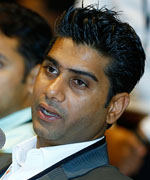
Karim Badruddin, General Manager, Central Ventilation Systems
Karim Badruddin, General Manager, Central Ventilation Systems: “For fire and safety products, civil defence is solely responsible for giving the approval needed so they can be sold. As for product quality, it is, of course, the responsibility of the manufacturers. What I’ve seen around here is that there are manufacturers who go against what their products are tested for by changing components to make them cheaper….
“I want to emphasise the issue of installation of fire-related products, irrespective of what product it is. Any fire product is successfully tested only on a certain installation method, which is described in their documentation. Now when the product is being purchased by an MEP contractor or a civil contractor, are these products installed in the same manner it was installed during the test? That is a big question.”

Vivek Thombre, Regional Manager, ME, Desiccant Rotors International
Vivek Thombre, Regional Manager, ME, Desiccant Rotors International: “Being a components manufacturer, one way around the installation issue is to carry out the installation in one’s own factory. As has been pointed out, it can be difficult to verify if a product’s performance is a result of how it was installed.”
Conclusion of Day 1
Day 1 of C3 concluded with Surendar thanking the delegates and promising an exciting array of sessions on Day 2 on regulation, and more importantly, self-regulation, among other topics. Leaving everyone something to mull over, he said: “It’s the responsibility of every individual and of every stakeholder, in this multiple-stakeholder community, to regulate themselves. This is not just about ESMA coming after you, but what we do as individuals towards energy efficiency and better IEQ.”
In September, we will be sharing with you the highlights on what transpired on Day 2.
Copyright © 2006-2025 - CPI Industry. All rights reserved.